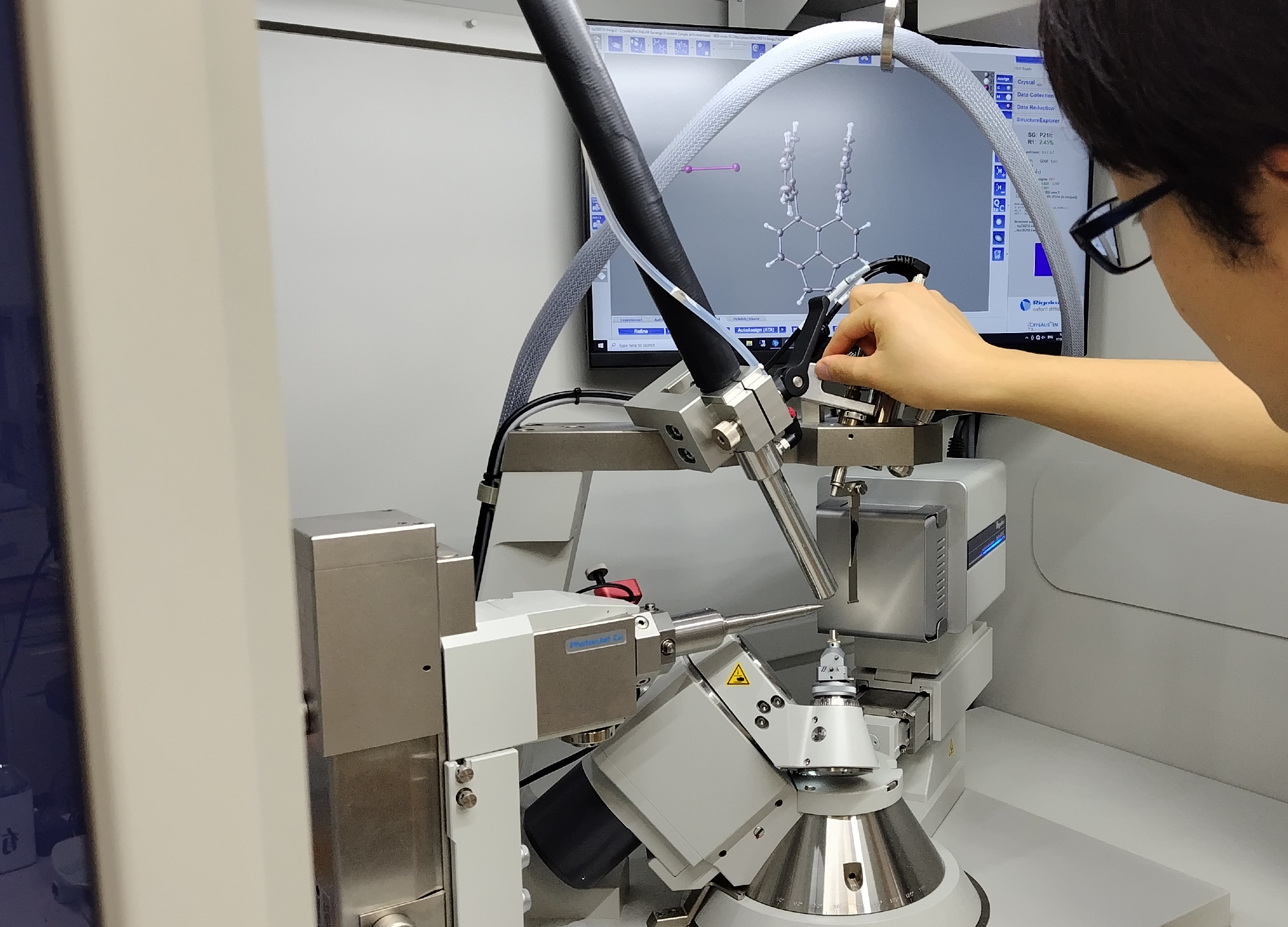Reviewed by Lexie CornerSep 27 2024
A research team from Hokkaido University has confirmed a century-old theory by discovering a stable single-electron covalent bond, known as a sigma bond, between two carbon atoms. This unique bond involves two carbon atoms sharing just one electron. The study has been published in the journal Nature.
 Using an X-ray diffractor to study the sigma bond. Image Credit: Yusuke Ishigaki
Using an X-ray diffractor to study the sigma bond. Image Credit: Yusuke Ishigaki
Covalent bonds, which form the backbone of most organic compounds, occur when two atoms share a pair of electrons. In 1931, Nobel laureate Linus Pauling suggested that bonds with just one unpaired electron might exist, though they would likely be much weaker than traditional two-electron covalent bonds. While single-electron bonds have been observed in other elements, they had never been identified in carbon until now.
Elucidating the nature of single-electron sigma-bonds between two carbon atoms is essential to gain a deeper understanding of chemical-bonding theories and would provide further insights into chemical reactions.
Yusuke Ishigaki, Professor and Study Co-Author, Department of Chemistry, Hokkaido University
An oxidation reaction involving iodine stretched the paired-electron covalent bond between two carbon atoms in a hexaphenylethane derivative, resulting in the formation of a single-electron bond. This reaction produced deep violet iodine salt crystals.
X-ray diffraction analysis of these crystals revealed the carbon atoms were exceptionally close, suggesting the presence of single-electron covalent bonds. To confirm this, the researchers employed Raman spectroscopy.
These results thus constitute the first piece of experimental evidence for a carbon-carbon single-electron covalent bond, which can be expected to pave the way for further developments of the chemistry of this scarcely-explored type of bonding.
Takuya Shimajiri, Study Lead Author, University of Tokyo
The study was funded by the Masason Foundation; the Research Program “Five-star Alliance” within “NJRC Mater. & Dev.” of the Ministry of Education, Culture, Sports, Science and Technology (MEXT) of Japan; a Toyota Riken Scholarship; Grants-in-Aid from MEXT (Japan) and the Japan Society for the Promotion of; and the Japan Science and Technology Agency (JST) PRESTO.
Journal Reference:
Shimajiri, T., et al. (2024) Direct evidence for a carbon–carbon one-electron σ-bond. Nature. doi.org/10.1038/s41586-024-07965-1